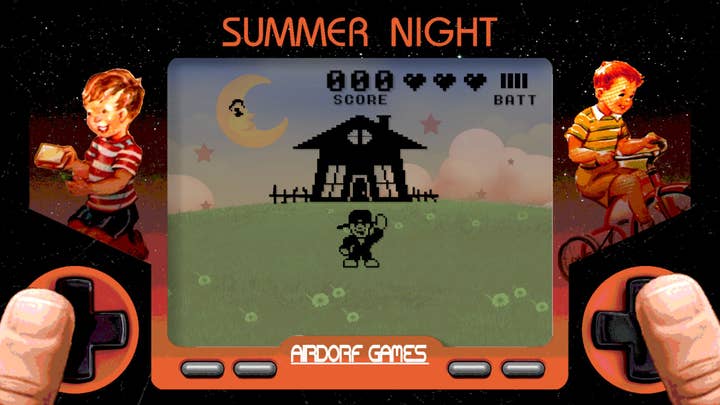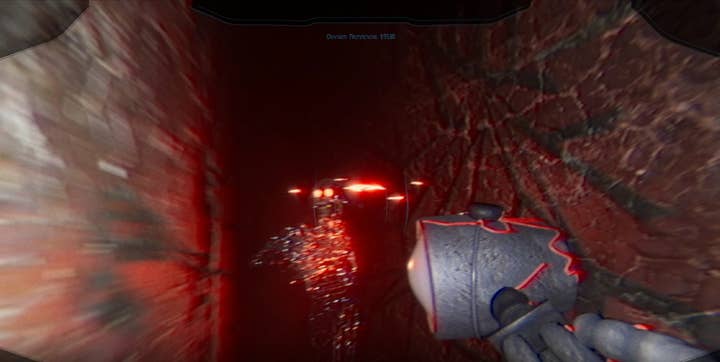Dread X Collection: Evoking Kojima's PT in context, not content
Dread XP's Ted Hentschke says Silent Hill teaser and horror film anthologies inspired his approach to indie horror game dev
In May of 2015, not even a year after it was released for free on the PlayStation Network, Hideo Kojima's PT -- or Playable Teaser -- was removed from the store entirely. It could not even be redownloaded by those who had installed it in the past.
But the haunting, brief glimpse into Konami's canceled Silent Hill project remained stuck in players' minds, with several websites awarding it Game of the Year or Game of the Month accolades despite it being as much a marketing exercise as a stand-alone game. It's gone on to inspire numerous fan projects and attempts at perfect recreations, though Konami remains precious about its property despite its refusal to re-release the teaser.
But as intriguing as a proper recreation of PT might be, journalist Ted Hentschke had a different idea. He wanted to use the premise of the "playable teaser" as a springboard to a new model for making indie horror games.
"There are a million PTs out there now, but basically, they all copy PT in content, but not in context"
Hentschke is in charge of Dread XP, the video game spin-off site of horror film hub Dread Central. After writing about both film and games for Dread Central and participating in the site's efforts to produce and distribute its own horror movies, Hentschke took on Dread XP late last year at the bidding of parent company Epic Pictures.
"The goal of Dread XP was always to bring that same level of indie coverage to the world of video games that we had done at Dread Central," Hentschke says, speaking to GamesIndustry.biz. "Central's always been a place that doesn't just cover the biggest Halloween news; it doesn't just follow the biggest Paranormal Activity news. It always gave a special spot to the indie creators. And when we started producing films, we wanted to bring that same ethos to indie films, to give them a level of exposure that they wouldn't normally be able to get.
"So when we started at XP, we wanted to do the same thing, and the goal was always to eventually move into the game production side of things in the same way that Dread Central is."

The idea of Dread XP producing its own video games was not originally intended to take hold as soon as it did. The site, after all, had just opened properly last November. But then, COVID-19 hit, effectively putting a halt on all filmmaking and any plans Dread Central had to that end.
So shortly after PAX East, Henschke was asked by Epic Pictures CEO Patrick Ewald what could be done to ramp up the video game side of things even faster, since so many film plans had been delayed or canceled entirely. In response, Henschke pitched a curated game jam, following the model of curated film anthologies like Tales from the Crypt.
The idea, Hentschke says, was to take ten established developers and have them make a game in a single week. They would pay the developers up front for that week of work, and then bundle their games together and sell it fairly cheaply, with profits split evenly all around.
"I've always been of the opinion that good horror doesn't necessarily take $400 million to make"
The theme? Creators were asked to "Make a PT for the horror project of your dreams."
"There are a million PTs out there now, but basically, they all copy PT in content, but not in context," Hentschke says. "Silent Hill wasn't going to be 40 spooky hallways. It was going to be more akin to other survival horror games. PT was a unique, standalone introduction to this world. And I really liked that idea.
"Because generally, the way that demos are done for games are vertical slices -- so you'll have 15 minutes of polished up, late game content, or just the first 15 minutes of the game, depending on the developer. And what I wanted to do was create something a little bit more unique than that. So instead of just 15 minutes of a game that we haven't created yet, instead, create something that's an introduction to this larger world."
The project was greenlit in March, and Hentschke had only a small window of time to find ten developers willing to sign on. Specifically, he wanted independent developers who had shipped games before, and he wanted a diverse array of content -- the project wouldn't work if it was just ten shooters.

"I didn't want ten spooky hallway simulators," he says. "When you tell someone to make their own PT, their mind immediately moves to a spooky hallway simulator. I wanted to make sure everyone knew that that's not what we're looking for. So when we sat down, everyone gave us ten very different ideas for games."
The resulting Dread X Collection launches tomorrow, and includes projects from developers Airdorf (Faith), Mahelyk (SCP: Blackout), Oddbreeze (Crew 167: Grand Block Odyssey), Strange Scaffold (An Airport For Aliens Currently Run by Dogs), Scythe Dev Team (Northbury Grove), Secret Cow Level (Doomtrooper), Snowrunner Games (Soda Drinker), David Szymanski (Dusk), Lovely Hellplace (Dread Delusion), and Torple Dook (Earl's Day Off, co-created with Airdorf).
"The current model of indie development is really ugly. You put however many years of your life into a product that might completely fail"
The projects are all short -- as pitched, each one was only made in the space of a week and is effectively a "teaser" for a larger world. That doesn't mean that every (or necessarily any) of these teasers will turn into full-fledged game releases, though Hentschke wants to leave the door open if that transition seems viable.
And importantly, the whole Dread X Collection was done relatively cheaply. In total, Hentschke says, it cost under $30,000 to make and produce -- in keeping with the spirit of the same low-budget horror movies that Dread Central is known for celebrating.
"I've always been of the opinion that good horror doesn't necessarily take $400 million to make," he says. "And this is proven time and again by the most popular horror movies. The most popular franchises that we see in the space generally come from very humble beginnings. The original Halloween film was made for basically no money [around $325,000]...And then you look at the gaming space: Slender: The Eight Pages got huge -- it was just started as a little Unity fan project. Five Nights at Freddy's was made in [six months] by Scott Cawthon for basically no money.

"There are a lot of really great indie games with humble beginnings. The problem is that the more established you become, the harder it is to spend your time working on a little experimental project that might not pay off. So the idea with the Dread X Collection was to give people the opportunity to work on something, give them money and time to do that, so that we can try to identify which of these ideas could be built off of into the next big thing. And I think that horror is especially unique for this concept because you can get the sense of what would be a cool full horror game with a much smaller budget and smaller production time than you can with any other genre."
"I wanted this to be a project that could not only make money for us as a company, but the indie devs themselves could replicate this process repeatedly to make indie development more profitable for them, because the current model of indie development is really ugly. You put however many years of your life, ranging between a year and a half at the low end to six years at the high end, into a product that might completely fail. There's no guarantee even if your product is good that anyone's gonna pay attention, and you're gonna have any return on your investment."
Fortunately, the shoestring budget means that, per Hentschke, the collection only needs to sell between 10,000 and 15,000 copies to actually make back its money. Which in turn makes it far more viable to consider more, similar collections in the future -- though Hentschke makes no promises.
"I think it's really sad that so many indie devs are like, 'If I move in with my dad, I might be able to finish my game,'" he says. "I'm not trying to say [anything against] the sacrifices that people make to make their dreams work, but it shouldn't have to be the case. So if we can do this, where we can gather ten people together, sell their games, and make it profitable -- hopefully, we can do it again and again.
"I'm happy that it's just done. That it got done and that we did it, because a lot of creators and people that want to be creators have trouble just getting their first product out the door. Success for me is the fact that it got done, and if this model works, hopefully then someone else out there will be able to do something like this in a week or a month or whatever and put something out there."

